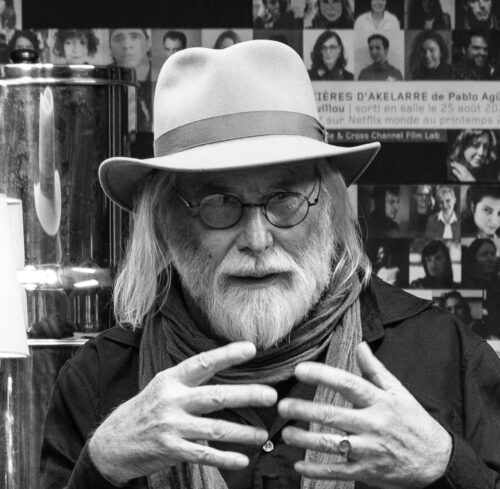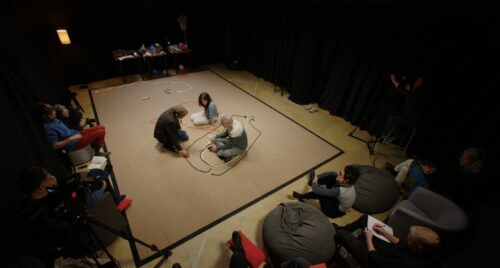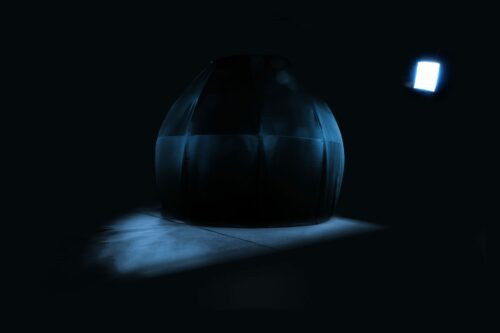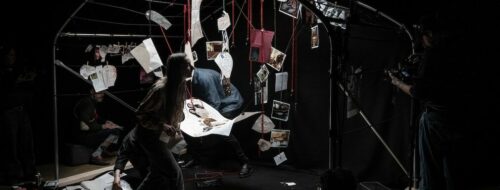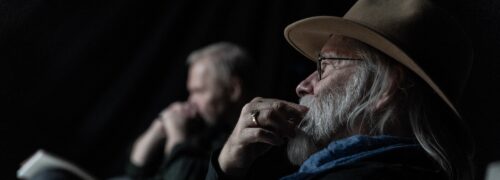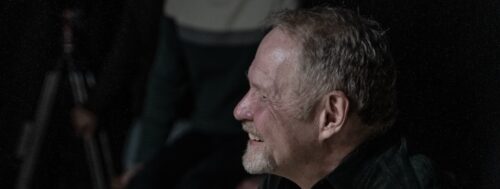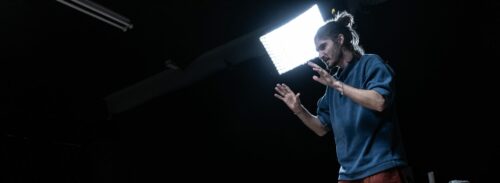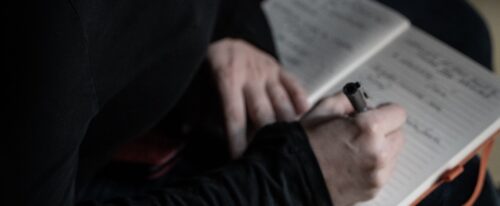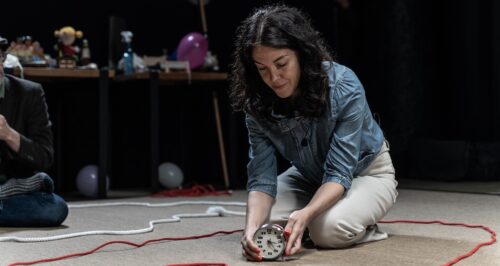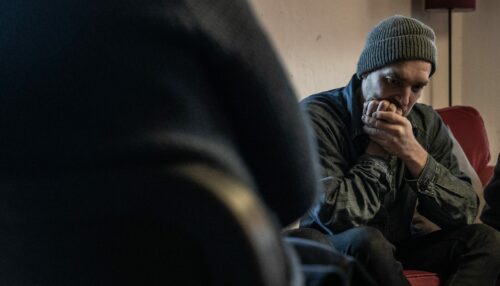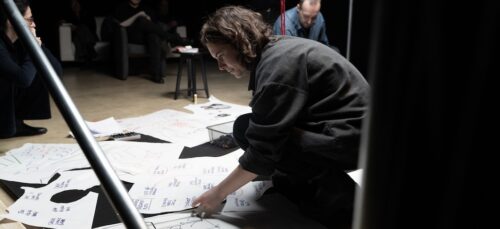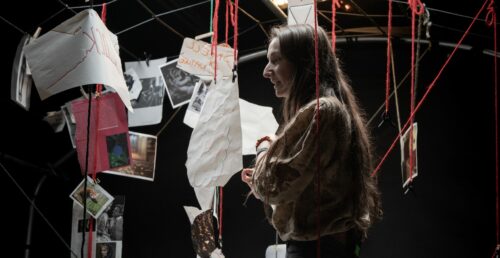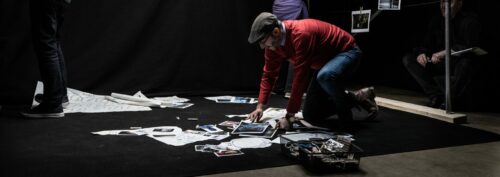Jean-Loïc Le Quellec
Jean-Loïc Le Quellec is a French anthropologist and prehistorian specializing in Saharan rock art. He has conducted several expert missions in the Sahara for UNESCO and is a Research Director Emeritus at the CNRS. In 2022, he published The Original Cave: Art, Myths, and the First Humanities. On France Culture, he asks: “Why enter dark caves to depict a small number of animal species, and more rarely a few humans, often animalized?” and proposes the hypothesis of “a great creation myth that informed the ontology of Paleolithic artists: that of primordial emergence, which spread across the entire surface of the globe as Sapiens discovered new territories.”
— As part of its 5th season, the StoryTANK team wanted to try a new experiment, under the guidance of six passionate and captivating researchers. The goal was to test and film the emergence of story ideas within experimental frameworks created by LA FABRIQUE DES MONDES — a unique initiative in Europe, developed at Le Groupe Ouest since 2023, under the auspices of the French Ministry of Culture.
The experience was offered to six screenwriters or filmmakers from six different European countries. Here, the StoryTANK provides an opportunity to explore and shed light on the creative process.
Below, a debrief by Jean-Loïc Le Quellec, as he reflects on his experience.
BRINGING THE STORY TO LIGHT
“ The equivalent of the moment when screenwriters sit down in front of their computers or pick up their pens to tell a story: it was prehistoric men and women who completed the emerging images emerging from the wall, under the influence of flickering light and darkness.”
The equivalent of the moment when screenwriters sit down in front of their computers or pick up their pens to tell the story: it was prehistoric men and women who completed the emerging images emerging from the wall, under the influence of flickering light and darkness. at is to say, at a given moment, we walk with our light and we see a shadow that we hadn’t noticed because it had just appeared, and which forms a kind of curve. This curve evokes the rump of a horse, the beginning of a horse’s neck. We then see the horse, which is not really there, but we see it moving, we see it galloping. If we are in a place where there is an echo, we clap our hands and the echo makes the horse gallop. So, we precisely make something appear and, then, if we are artists by nature or by function or, if we have been asked to do it for a thousand reasons, all that remains is to complete it.
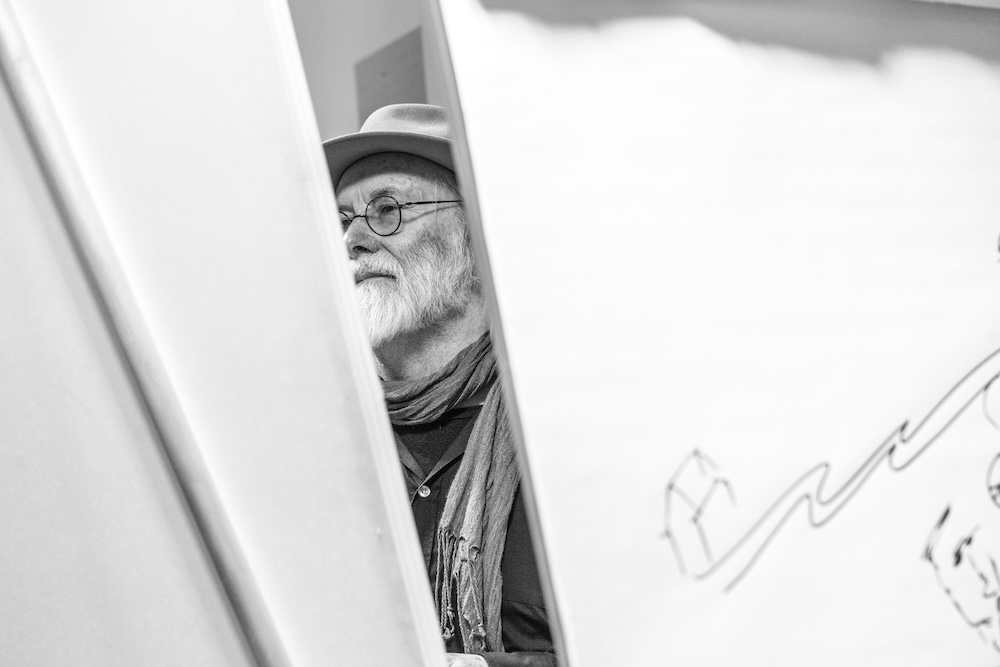
UNPREDICTABILITY AS THE FOUNDATION OF THE STORY
“ The unexpected is an important element because it’s the foundation of creation.”
The unexpected is an important element because it’s the foundation of creation. Entering an unknown space, and even more so a cave, without knowing what you’ll find there. You could hit your head on something you didn’t anticipate, you could fall into a chasm, you could come face to face with a dangerous animal—you have no idea!
THE CAVE
MOVING THROUGH THE STORY TO THINK ABOUT IT DIFFERENTLY
“Occupying the Cave with your body”
The Cave is a three-dimensional space, a greenhouse! The whole point is to be able to occupy a space with your body, to struggle to hang something, especially, and not only. All of this makes for a totally interesting experience because it forces you to move through the space and think differently.
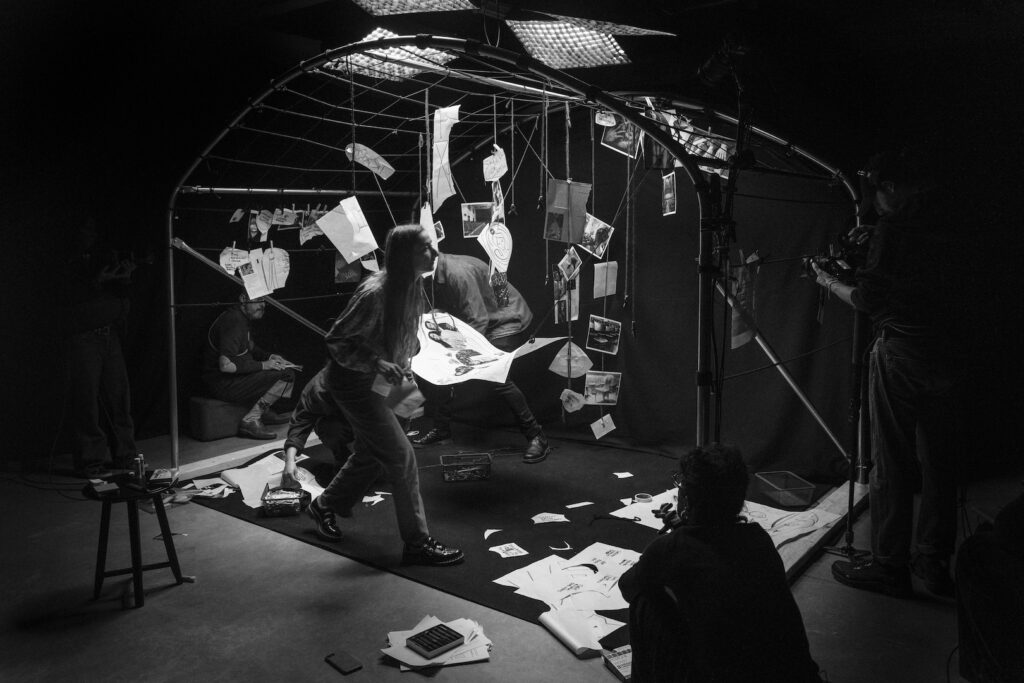
THE FACTORY OF WORLDS
THE SEEDS OF THE STORY
“THE FACTORY OF WORLDS, where ideas or what we call narrative motifs, that is, story elements, can emerge.”
The three experimental devices of THE FACTORY OF WORLDS are like crutches, a kind of aid, designed to foster a state in which ideas or what we call narrative motifs, that is, story elements, can emerge. A complete story won’t emerge immediately. We pull, we unfold, and it doesn’t matter if there’s no story: there are seeds of the story.
BEING BETWEEN THE INSIDE AND OUTSIDE OF THE NARRATIVE IN COMPOSITION
“THE FACTORY OF WORLDS transports us into an almost hypnagogic state, that unique moment between waking and falling asleep.”
THE FACTORY OF WORLDS plunges each of us into a unique state that comes as close as possible to the hypnagogic situation, that moment when we are between waking and falling asleep. We are between the two, between that moment when we are not completely awake, thinking, assessing, judging, and rationalizing everything that is happening, and that moment when we are not completely outside it either… and it is precisely there that ideas spring forth.
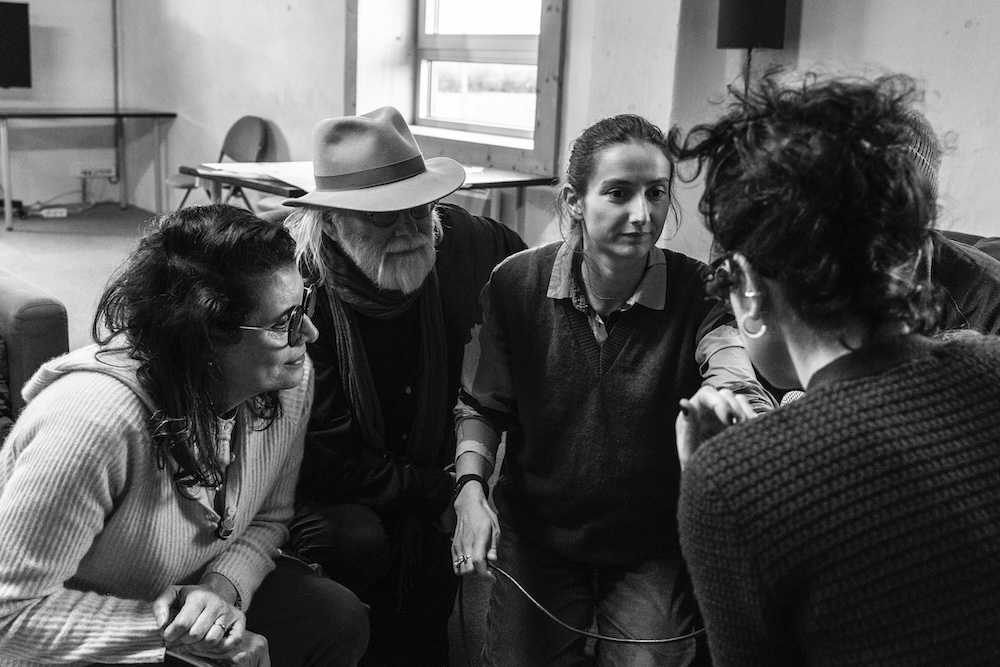
COLLECTIVE APPROPRIATION OF THE STORY FACTORY
“A real, fruitful uncertainty sets in, until the first building blocks of the story emerge.”
THE FACTORY OF WORLDS requires collective familiarization: not everyone moves at the same speed, not everyone reacts in the same way to the same stimuli, obviously… A real, fruitful uncertainty then sets in, until the first building blocks of the story emerge. We then see the components of the story emerge in completely unexpected ways. The process is co-creative: something happens, we all participate in the creation, and it works in turn.
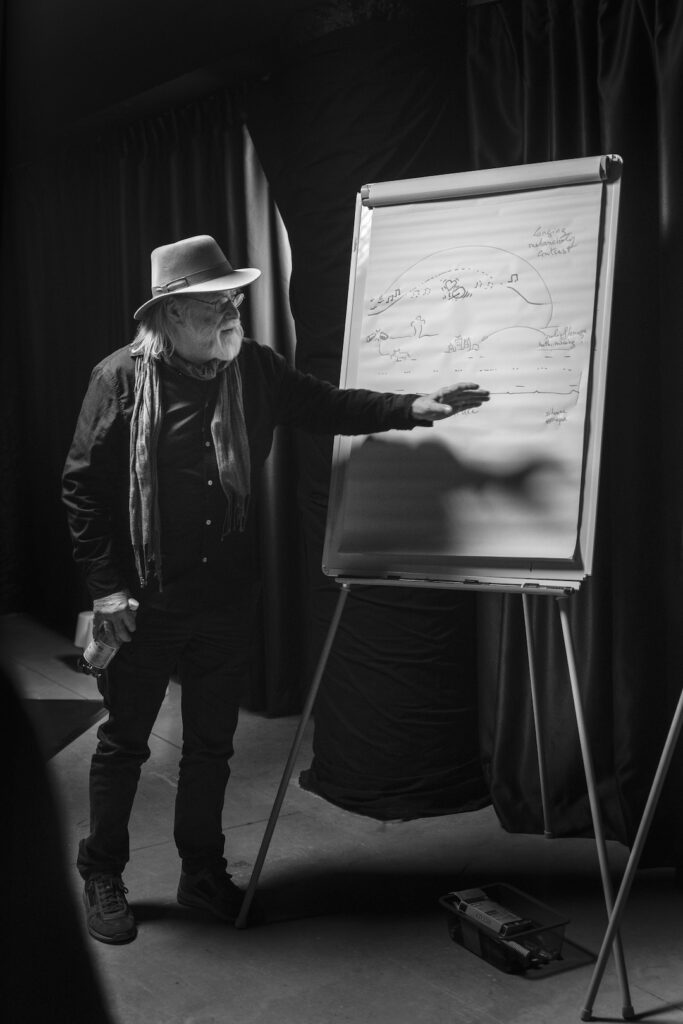
A JOURNEY THROUGH TIME, A RETURN TO THE ORIGINS OF THE STORY
“And there, the journey in the company of everyone else is a co-creation, a co-journey!”
I’m struck by the fact that THE FACTORY OF WORLDS appeared to me as a journey through time, a return to the origins. The passage from the Cave—which is actually a greenhouse—to the Black Room, which is a black yurt, is done in exactly the opposite direction of the path that actually took place in the evolution of North Eurasian and North American shamanism. ere are two types of shamanism, the one with the light tent and the one with the dark tent, with the same idea of taking a journey but using different techniques.
On the one hand, in the light tent, there’s a shaman—a specialist and professional in writing and sharing the journey. He’s standing, and everyone is sitting and watching him. And no one participates other than by watching, by listening, like a show. The journey is thus perceived as an imaginary journey. However, for him, the journey really exists, and to convey his journey, he is obliged to speak, to explain, to say what he sees, to mime, and therefore to move in space as well. The relationship between the shaman and the audience is here a hierarchical one. On the other hand, the black tent corresponds to an older period, because we know that there was an evolution of shamanism: we moved from the dark tent to the light tent. In the dark tent, in the darkness, the shaman can be anyone. And the one playing the role of the shaman lies in the center of the tent, the others are around. It is therefore a heterarchical relationship, that is, a type of relationship that favors horizontality and not a vertical relationship. And here, the journey in the company of all the others is a co-creation, a co-journey.
